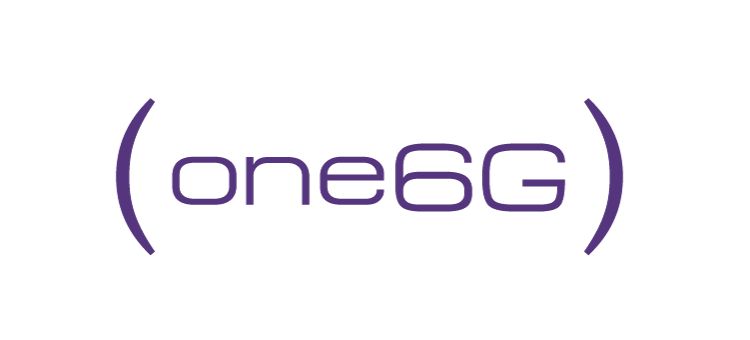Working Group 4: Evaluation, testbeds and pilots
Chaired by Mr. Joseph Eichinger (Huawei), Working Group 4 covers all the steps from development to deployment (integrated sensing and communication, testing procedures and certification, testbeds, and trials).
CHAIR

Joseph Eichinger
Head of 6G Research and Prototyping,
Huawei Munich Research Center
VICE-CHAIR

Youssef Nasser
5G/6G Business Line Tech. Leader
Greenerwave
WORK ITEMS
- Analyze the role of digital twin and metaverse in 6G ecosystem,
- Identify the use cases in which digital twin and metaverse can have substantial impact on verticals, such as healthcare systems, outdoor multi-robot collaboration, or digital twin of wireless networks.
- Determine the communication and sensing functionalities required to realize the use cases attributed to digital twin and metaverse, e.g. for robotics.
- Identify the desired 6G system capabilities with the realization of digital twin and metaverse and the potential impacts of these use cases on 6G architecture (both within and across network operators).
- Analyze the KPIs for communication and sensing requirements for the use cases.
- Propose a 6G digital twin framework.
This Work iItem aims to develop a networked, virtualized simulation and trial platform for the deployment and testing of 6G use-cases and scenarios, with demonstrable benefits and a vision when the proposed solution matures. The expected outcome is to define a methodology for a sharable research, demonstrations and prototyping infrastructure, whose elements will be made available to members even if the full set of tools is still under development. In addition, an initial true virtualized and distributed testbed should be established based on the agreed interfaces and API. Moreover, an appropriate methodology should be defined to enable the connection of real-time capable testbeds and prototypes provided by one6g members.
- Organize calls for demos and hackathons for the annual one6G Summit.
- Create a unique 6G multi-purpose simulation and trial platform by collaborating with interested industrial and academic partners on use cases, system prototyping and heterogeneous integration of vertical solutions.
- Based on this, a platform requirement, interoperability and maintenance will be explored together with the involved one6g partners and summarized in a Guideline document.
- The platform may consist of parts provided by individual partners or groups of partners.
- Definition of rules for approving a testbed as a one6g-certified part of 6GENIAL.
- Trusted Open Data Sharing Initiative (TODSI) of one6G was launched by WG4 during the one6g summit 2022.
- The objective is to collect relevant references of data bases to ensure that the results of the research performed in one6G is comparable. References could be a link to public data bases hosted by the internet but also references to data provided by members and stored in the one6g internal data base.
- Share measurement (e.g. channel, traffic, etc.), sensing (e.g. mono static, multi static), as well as training data recorded by other one6G members.
- TODSI Value:
- Not all one6G members have the capabilities and plans to build radio prototypes and measurement equipment necessary to get real sensing data from real objects and environments.
- Not all one6G members are capable to get sufficient and high quality training data for their AI studies.
- The initiative will help to accelerate specific 6G research processes by integrating the open data into the research simulation and post processing.
- Moreover, TODSI inspires 6G researchers to establish an ecosystem and platform to work together.
- TODSI Principles: defined in the WG4 report on “Evaluation guidelines for all simulation, emulation and prototyping activities”, released in September 2022 [1].
- Which kind of data should be shared :
- In the context of one6G the most valuable data are measurement data and models.
- Each data set has to be described by Metadata. Clear and detailed documentation is the key for the interpretation and later use of the data.
- There should be no possibility to derive direct or indirectly any personal data, GDPR and applicable data protection regulations have to be respected.
- Refer to WG4 “Evaluation guidelines for all simulation, emulation and prototyping activities”.
- WG2 will perform the theoretical analysis and simulations.
- Furthermore it is necessary to demonstrate and prove candidates of the key components and functions by prototypes and functional demonstrations.
- Besides many other trends integrated communication and sensing is identified as essential technology for 6G.
- This joint Work Item between WG2 and WG4 aims to demonstrate the functionalities and advantages of integrated communication and sensing. It should demonstrate how imaging of objects or human bodies can be done by using mobile radio technologies and whether it is possible to interpret gestures of humans in order to give meaningful instruction to machines, robots, or moving vehicles.
- One of the major objectives of this Work Item is the definition of the evaluation guidelines for all simulation and emulation activities in the project.
- The expected outcome is a set of guidelines for validation and testing, which aims at collecting relevant inputs from all other Working Groups regarding validation and testing purposes.
- Propose a framework for the cooperation and dependencies between the Working Groups among themselves and the Work Items.
- The guideline therefore also proposes cooperation between the one6g partners to create joint simulation frameworks. It is not limited to simulation; more intensive cooperation can also include the exchange of measurement and AI training data or even the interconnection of prototypes from different partners and to invite for hackathons events.
- Furthermore, a methodology framework for simulations, emulations and demonstrations is proposed and references to 3GPP for system level and link level simulation assumptions.
- Guidelines for verification and validation based on prototypes including the definition of different test types. Last but not least, the report gives a proposal about the tasks to align with architecture models provided by other Working Items.
